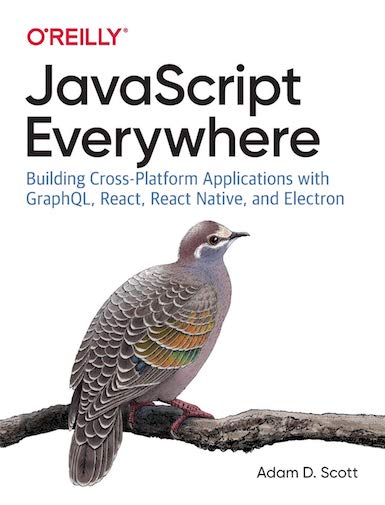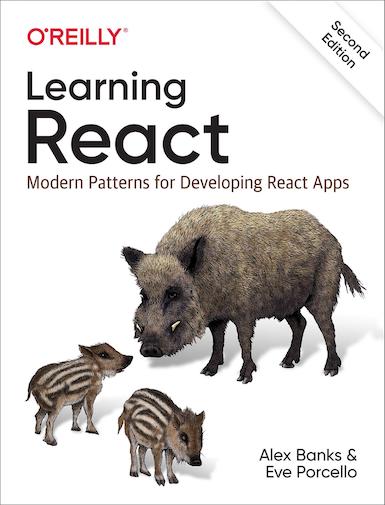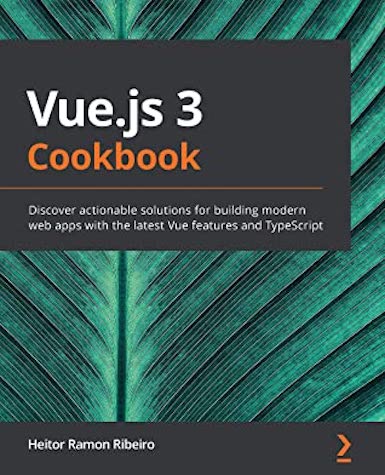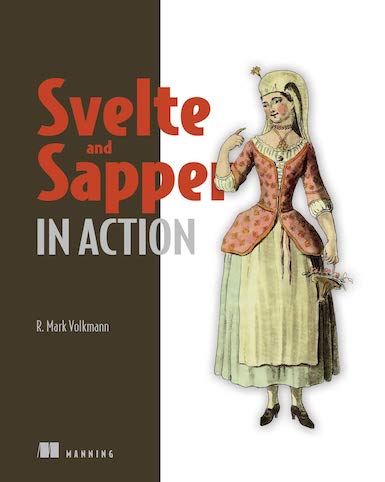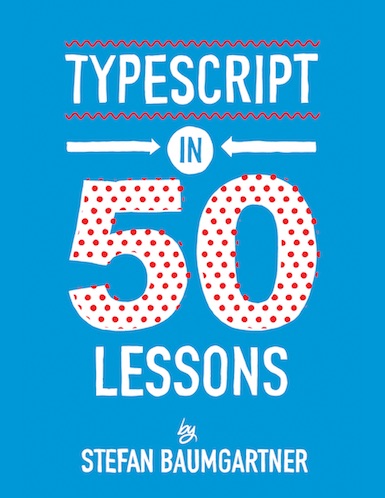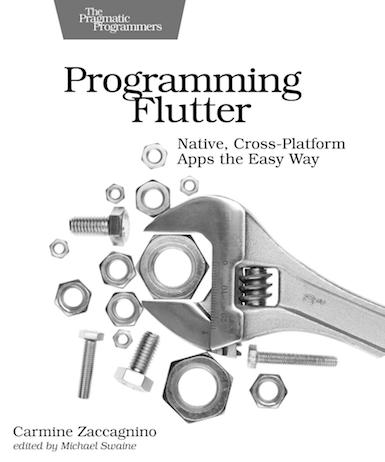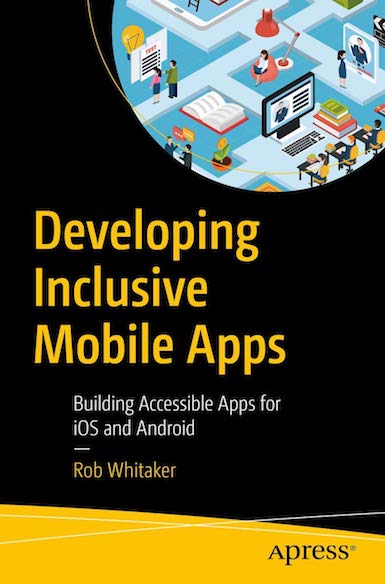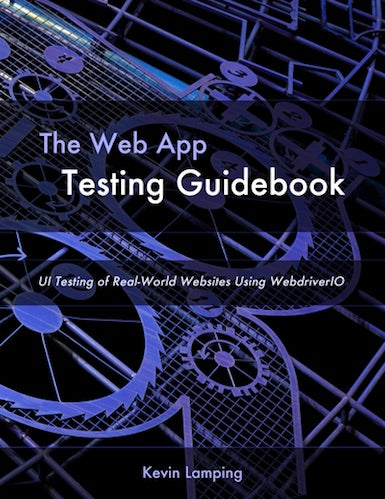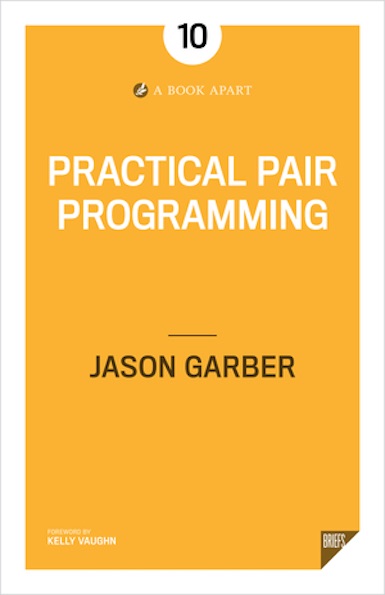Apps are a huge business these days. The Shopify App Store alone features more than 5,000 apps that reach over a million merchants around the world.
At the same time, figuring out just how to create an app is getting more and more complex. Developers are spoiled for choice when it comes to tools and technologies, and it can be difficult to decide which ones to choose for your projects, especially as there are many conflicting best practices out there. Critically, developing native apps, specifically for iOS and Android, is also time-consuming and costly, and a lot of clients now decide to develop their app on multiple platforms simultaneously.
To make things a bit easier for you, we compiled 15 app development books—some of them brand-new and all launched or updated this year—that focus on building apps with web technologies. This means that most of the titles on our list only require you to be familiar with HTML, CSS, and JavaScript. We look at how to build modern cross-platform apps with the most popular JavaScript frameworks (React, Angular, Vue, and Svelte) and explore the tools you can use to make the:
- Development of your apps more efficient
- Apps themselves faster, more scalable, secure, and inclusive
Whether you develop mobile, web, or desktop apps, you’ll find something here.
Happy reading!
1. Modern Full-Stack Development
In this book, software engineer Frank Zammetti explains how you can use React, Node.js, TypeScript, Webpack, and Docker to build complete modern web apps.
Frank explains what these tools have to offer individually and how they all fit together. You’ll learn how to get a project started and build two real-world apps that you can install on your own server. At the end, you’ll have a solid understanding not only of how to build cutting-edge apps, but also how to optimize and organize your code for deployment as well as wrap it up with Docker for easy distribution. Other topics covered include creating a user interface with Material-UI, using WebSockets for real-time communication between client and server, and building a REST API with Node and Express as another approach to client-server communication.
2. JavaScript Everywhere
This book by web developer and engineering manager Adam D. Scott covers how to build cross-platform applications with JavaScript, specifically using technologies such as Node.js, Express.js, GraphQL, MongoDB, React, React Native, and Electron.
Aimed at developers who want to build full-stack web, mobile, and desktop apps, as well as ambitious beginners looking to bootstrap a business, ‘JavaScript Everywhere’ dives into GraphQL’s process for querying data, shared authentication for web and native apps, building performant web apps with React and styled components, using React Native to write apps for both iOS and Android that compile to native code, and much more.
JavaScript truly is everywhere these days, and this book makes sense of the complete modern JavaScript ecosystem for building robust apps that work on several platforms.
You might also like: How to Build a Shopify App in One Week.
3. Learning React
The second edition of ‘Learning React: Modern Patterns for Developing React Apps’ by Alex Banks and Eve Porcello provides best practices and patterns for writing modern React code, including a deep dive into React Hooks.
You don’t even need to have any prior knowledge of React or functional JavaScript: The book introduces you to functional programming concepts, explains how React runs in the browser, and covers the latest ECMAScript features. You’ll also learn how to create application presentation layers with React components and reduce the time you spend debugging. This is the definite guide for anyone wanting to build efficient React applications.
4. The Opinionated Guide To React
In this self-published ebook, self-taught developer Sara Vieira shares the tips and tricks that she’s learned during four years of “trial and error” React development. The React world is full of options (and hype!), which can easily feel overwhelming, and Sara’s insights and opinions will help you make better decisions about the tools and architecture of your apps. Topics discussed include: folder structuring, packages, state management, deployments, hooks, performance, and much more.
Every React recipe comes with step-by-step code examples that are hosted online, so that you can edit and play around with them. And as the React ecosystem keeps evolving, you will receive an update of the book every time a new version of React is released.
5. Pro Angular 9
This book, by best-selling author Adam Freeman, is a must-read guide if you want to learn Angular and how to use the JavaScript framework to build powerful and dynamic web apps.
The fourth edition explains how to get the most from Angular, starting with an in-depth overview of the model-view-controller pattern and the range of benefits it can offer. You’ll then explore the tools to create and build an Angular project, extend and customize Angular, work with its routing system, use data bindings to animate HTML elements to reflect changes in the state of the application, and unit test the components and directives of your app. All code examples also work without changes in Angular 10.
6. Vue.js 3 Cookbook
Version 3 of Vue.js, the progressive JavaScript framework that is mainly focused on building modern user interfaces for web apps, enhanced the architecture and introduced new base languages, render processes, and separate core components. This book by front-end engineer Heitor Ribeiro explains how you can implement the latest features in your web development projects and migrate existing Vue.js apps to the latest version.
You’ll also learn how to get up and running with TypeScript and find succinct solutions to common challenges and pitfalls when implementing components, derivatives, and animation, building plugins, adding state management, routing, and developing complete single-page applications. You’ll also discover the Vue.js ecosystem and how to use tools like Nuxt.js before getting a good understanding of packaging and deploying your apps.
You might also like: How to Market an App: 11 Expert Tips.
7. Svelte and Sapper in Action
Svelte is the latest JavaScript framework to make waves in the app development world. It requires minimal code and is lightweight yet comprehensive. Svelte pushes a lot of the work other frameworks like React and Vue handle in the browser to a compile step, so your app components come out as tight, well-organized JavaScript modules that make the app fast.
This book by Mark Volkmann explains how you can combine Svelte with Sapper, an application framework powered by Svelte that minimizes application size through server-rendering and only loading the JavaScript you need. It also adds flexible and simplified page routing, code-splitting, offline support, as well as static site development to your process. As a result, your productivity will get a significant boost, and the apps you build will be faster, more elegant, and more user-friendly.
8. Master TypeScript in 50 Short Lessons
TypeScript can help you write better JavaScript and significantly boost your productivity when building applications. The programming language that acts as an additional type layer describing the behavior of our JavaScript code is very popular, but the sheer amount of material, perspectives, and use cases can be overwhelming.
Aimed at beginners and intermediates alike, this pragmatic book by web developer Stefan Baumgartner breaks down everything you need to know about TypeScript into 50 manageable interactive lessons. The focus is on the long-lasting aspects of the vast and flexible type system to ensure none of the chapters go out of date. The many code examples and walkthroughs not only give you an idea about syntax and semantics, but also show you actual use-cases that you might encounter in your applications.
9. Programming Flutter
Flutter is Google’s open-source UI toolkit designed from the ground up for dual platform development: you can build native, cross-platform apps from a single codebase, which can save you a ton of time and nerves.
As it’s by Google, it’s no surprise that over the last year, a lot of books have come out that cover this trending technology. In this one, mobile and web developer Carmine Zaccagnino goes all the way from the very first steps to actually building your own apps for both iOS and Android.
You’ll learn how to develop faster by writing code in just one language, with your favorite libraries. Use built-in UI elements (or build your own), apply visual effects to widgets with transitions and animations, and test and debug your apps. This is ideal for beginners as it doesn’t require previous knowledge of Dart, the programming language used to code Flutter apps.
10. Hands-On JavaScript High Performance
This book explains how to build faster, secure, and scalable web apps using Node.js, Svelte.js, and WebAssembly. It takes you through popular front end development tools and modern best practices to give you a solid understanding of how to improve the performance of your apps and significantly speed up development at the same time.
You’ll discover effective techniques for accessing the document object model (DOM) and use a V8 engine to optimize JavaScript, learn the difference between immutable and mutable code, and explore the cutting-edge JavaScript framework Svelte.js for developing next-generation web apps. You’ll also learn how to build apps to work offline with service workers and dive into advanced topics like continuous integration for deploying your apps. There’s a practical side, too: you build a complete real-time to-do app, a basic weather app, and a static server.
11. Developing Inclusive Mobile Apps
Inclusive design—the practice of creating experiences that work for as many people as possible—is now an essential skill. It’s easy to see why. In the US, 23 percent of people with a registered disability aren't online at all because they feel their disability prevents them from using the internet (according to a Pew Research Center survey).
To help combat digital exclusion, Rob Whitaker, an iOS software development engineer currently working on making the Capital One UK app the first mobile app certified by the Royal National Institute for Blind People, has written this book, which covers considerations and tools mobile app developers can use to build accessible apps for iOS and Android.
Rob explains how to accomodate people with disabilities from hearing and sight to motor skills and cognitive disabilities, dives into the Web Content Accessibility Guidelines and how to apply them to mobile, and covers how to test your app to ensure that it is indeed accessible to all. Also check out Mobile A11y, Rob’s blog about making mobile more accessible for everyone.
You might also like: Inclusive Design: 12 Ways to Design for Everyone.
12. Web Application Security
This book raises awareness of the latest common vulnerabilities found in modern JavaScript-based web applications and how they can be exploited by hackers before laying out strategies to protect your own apps.
Andrew Hoffman, a senior security engineer at Salesforce, covers methods to analyze apps (including those you don’t have direct access to), the latest techniques attackers use to break into apps, and how to develop and deploy mitigations to defend them—for example by securing the app architecture and third-party dependencies. You’ll also learn secure coding best practices that you can integrate into your development lifecycle, such as code reviews, and lots of practical tips to help you improve the overall security of your web applications.
13. The Web App Testing Guidebook
The popularity of automated UI tests is increasing proportionally with the complexities of the sites and apps we build. Automation can save immense amounts of time and catch bugs that would otherwise have made it to production. However, there’s a learning curve, and if you don’t set up your tests properly, they can constantly break and cause endless headaches.
To explain the principles of effective UI test automation, front end engineer Kevin Lamping has written this step-by-step guide, built around real-world examples. It demonstrates what WebdriverIO, an automation test framework for Node.js that Kevin is a core contributor to, can do, but also how you can actually set it up to write your own tests. Also check out Kevin’s YouTube channel focused on front end testing and stay tuned for the update of his WebdriverIO video course.
You might also like: Developing Your First Shopify App: 4 Mistakes to Avoid.
14. Practical Pair Programming
Two brains are famously better than one, and this applies to the world of development as well. Pair programming—the technique that sees two developers work together on the same code—can make a huge difference to a project.
After years of documenting his ideas, thought processes and lessons learned at software firm Promptworks in a Google Doc, COO and cofounder Jason Garber distilled it all into one brief guide. Jason compares pair programming to sharing controls like two copilots in a cockpit and explains the benefits, logistics, and challenges, how to be a better pairing partner, and how to get management buy-in for the practice. If you ever wanted to know anything about pair programming, this is the book to get.
15. The Coding Career Handbook
For some excellent career advice for junior to senior developers, look no further than this ebook by Shawn Wang, currently working on developer experience at Amazon Web Services. It features invaluable tips for every career stage, including the first job hunt, how to transition to the next level, grow your network and expertise, negotiate, bet on the right technologies, market yourself, and much more.
‘The Coding Career Handbook’ comes in three different packages: The most basic tier includes the book only, the community tier gives you access to a moderated Discord chat to talk with other readers about the ideas from the book, and the creator tier also invites you to live workshops on various related topics.
And if you’re considering going out on your own, also check out 'Start Freelancing Today', an ebook by Shopify Plus partner Kelly Vaughn.
Take the Partner Blog content survey
In an effort to bring you even better content in 2021, we’ve put together a quick survey to learn more about what you’d like to see on the blog next year. Find it below.




